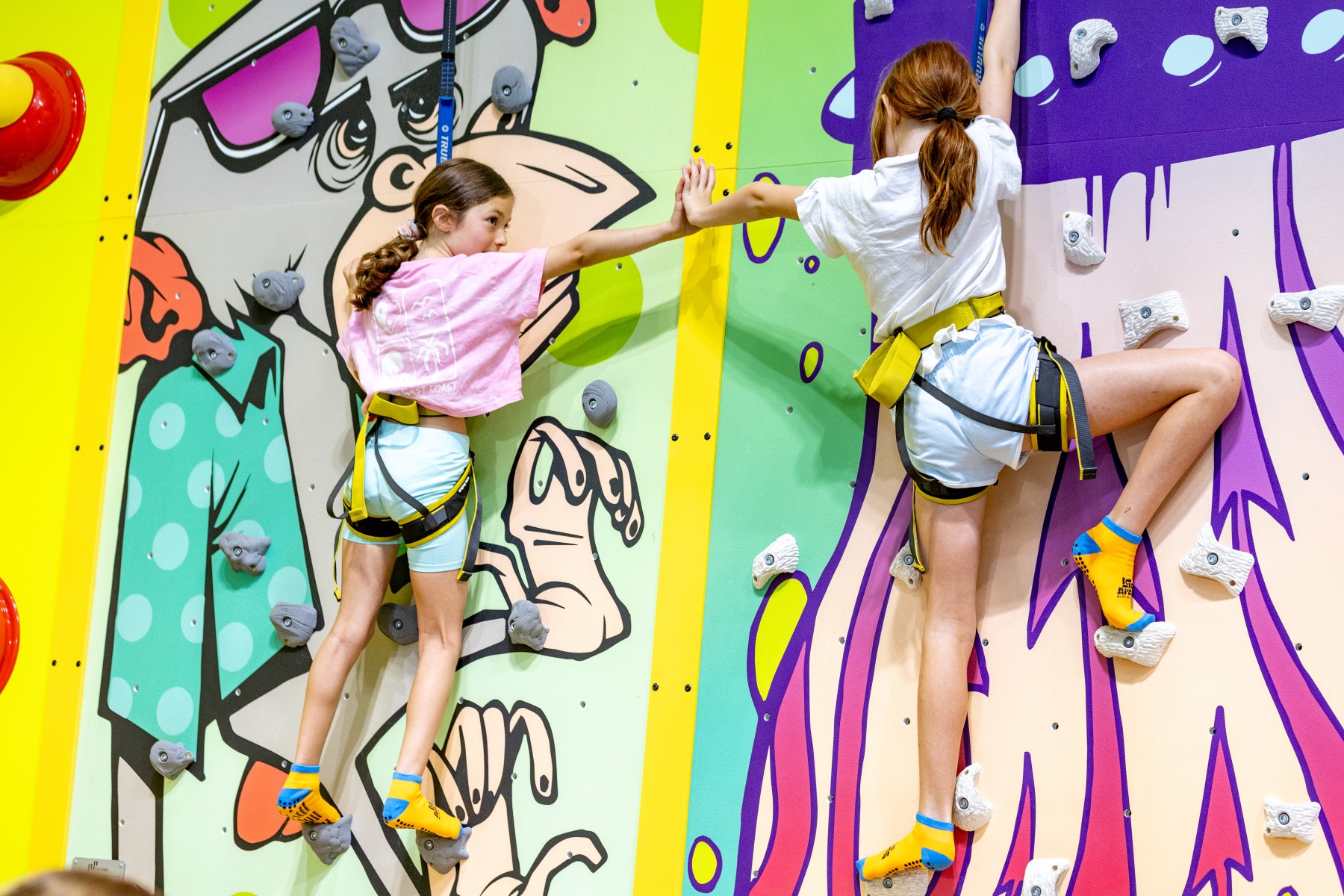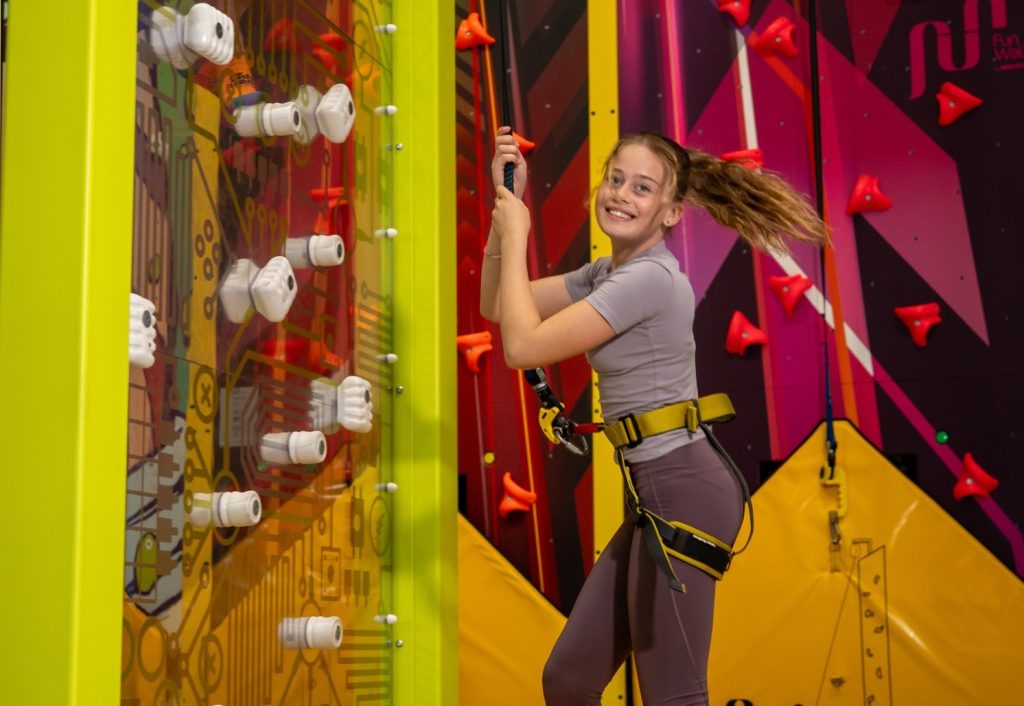
In a world where screens often steal the show, finding activities that get kids moving, thinking, and connecting with others can feel like a treasure hunt. Climbing is one of those rare gems—an activity that’s not just fun but also builds kids up in ways that stick with them for life. It’s more than scaling walls; it’s about growing stronger, sharper, and kinder. Here’s why climbing is such a big deal for kids.
A Full-Body Workout That Feels Like Play
Climbing isn’t your average playground romp. It’s a full-body adventure that works muscles kids didn’t even know they had. From gripping holds to stretching for the next step, every move builds strength, balance, and coordination. Unlike repetitive drills, climbing feels like a game, but it sneaks in skills that help kids run faster, jump higher, or even just carry groceries without a stumble.
The physical perks go deeper than muscles. Climbing is weight-bearing, which is great for growing bones, especially during childhood when strong skeletons are built for life. It’s also a sneaky cardio workout—kids’ hearts pump harder, and their lungs get stronger with every climb. Plus, the constant shifting and balancing sharpen their sense of where their body is in space, giving them a kind of superpower for coordination that spills over into everything they do.
A Brain Boost from Every Route
Every climbing wall is like a giant puzzle waiting to be solved. Kids have to think ahead, plan their moves, and adjust on the fly when things get tricky. It’s not just physical—it’s a mental workout that builds focus, problem-solving, and the ability to stay calm when the going gets tough. Studies back this up: climbing lights up the parts of the brain tied to memory, decision-making, and sticking with hard tasks.
Climbing also teaches kids to set goals they can actually see. Reaching the top of a route isn’t abstract—it’s a clear win that shows them hard work pays off. And when they don’t make it? They learn to manage frustration, push through fear, and try again. These are the kinds of mental skills that make homework, projects, or even tough conversations easier down the road.
Building Bonds and Character
Climbing isn’t a solo sport, even if it looks that way. Kids cheer each other on, swap tips, and celebrate when someone conquers a tough route. In climbing gyms, you’ll see them working together, learning to trust and rely on one another—especially when they’re belaying, holding the rope to keep their partner safe. It’s a crash course in responsibility and teamwork.
This environment also shapes character. Kids learn that falling is part of the process, and getting back up is what counts. They pick up leadership skills when they guide newer climbers, and they practice clear communication to keep things safe. These moments build confidence, grit, and a healthy way of handling both wins and setbacks.
Safe and Welcoming Spaces
Climbing might sound risky, but modern facilities make it super safe, even for kids as young as three. Places like Kids Arena in Costa del Sol, designed just for young climbers, show how it’s done. They’ve got top-notch safety gear, kid-friendly routes, and trained staff who know how to challenge kids without overwhelming them. The equipment is sized for small hands and feet, so kids can focus on the fun, not the struggle.
Skills That Last a Lifetime
The benefits of climbing don’t fade when kids leave the gym. The problem-solving they practice helps them tackle tough math problems or navigate group projects. The confidence they build from reaching new heights makes them more willing to try new things, whether it’s a new sport or a new subject in school. And the resilience they develop? That’s a tool for handling life’s ups and downs, from missed goals to big changes.
Making Climbing Part of the Routine
Getting kids into climbing is easier than you might think. Many towns now have gyms with kid-friendly walls and classes, and places like Kids Arena in southern Spain are perfect examples of welcoming spots where kids can thrive. The World Health Organization says kids need 60 minutes of physical activity a day, and climbing makes that goal fun—way more engaging than jogging in circles.
Cost-wise, climbing is often budget-friendly. Many gyms offer day passes or family deals, and beginners don’t need much gear since most places provide ropes, harnesses, and shoes. It’s a low-hassle way to get active.
Flipping the Script on Screen Time
Let’s face it: screens are everywhere, and they’re tough to compete with. But climbing offers something digital games can’t—real, tangible wins and face-to-face connections. It pulls kids away from endless scrolling and into a world where they can feel their strength and see their progress. Plus, the focus climbing demands helps kids tune out distractions and stay present, a skill that helps in school and beyond.
Climbing isn’t just a hobby—it’s a way to help kids grow stronger, think sharper, and connect more deeply with others. In a world that’s constantly pulling their attention in a million directions, it’s a hands-on, heart-pumping path to becoming their best selves. Whether you’re a parent looking for something new or just want to give your kids a boost, climbing is an adventure worth trying.
Nancy Cole has over 15 years experience as a educator and health practitioner. She has a B.S. from Brock, and a Ph.D. in biology from the University of Guelph . Nancy has worked as a special medical consultant for a major insurance provider before becoming a freelance health author and public speaker.
